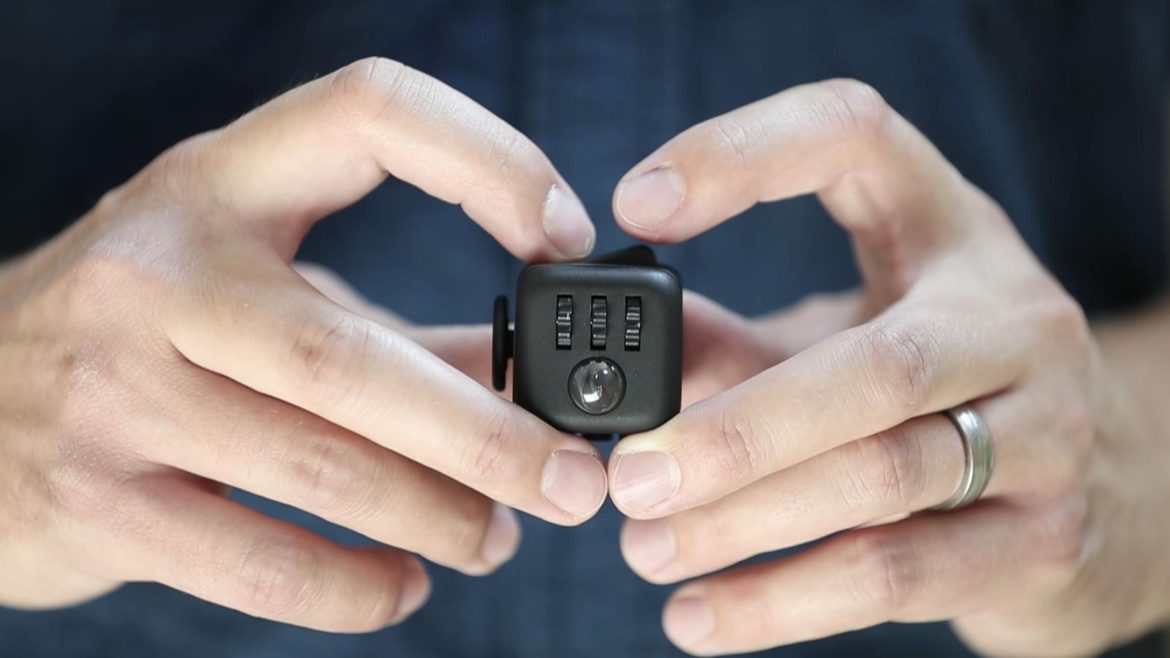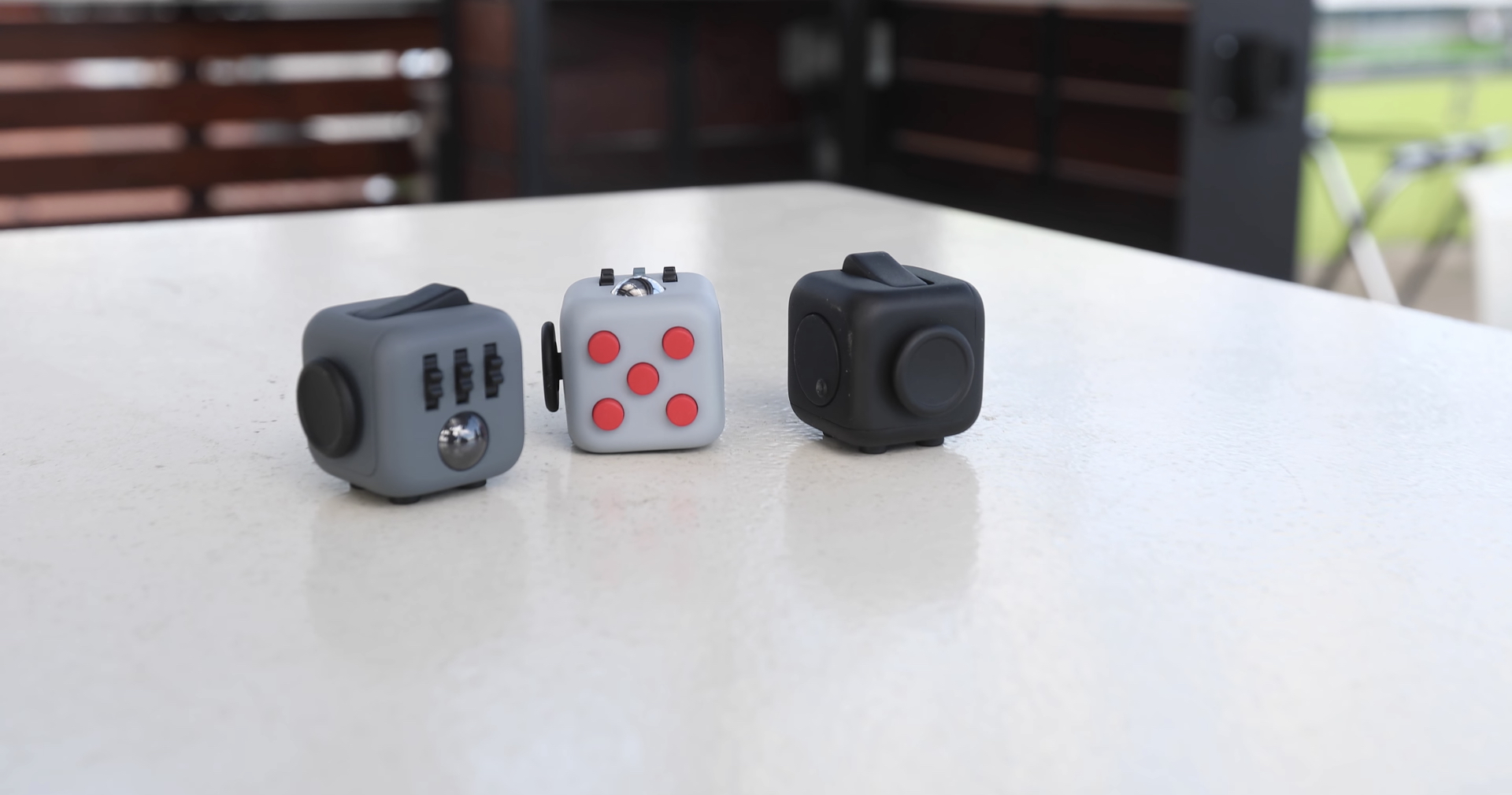
Vice: “The wildly popular toys may help kids focus, but they’re masking the root causes of childhood attention deficit disorder.
When I was in high school, my attention problems were so bad that I once spent a math class covering my entire body in those little paper circles you use to repair the holes in loose leaf paper. Needless to say, I was kicked out of class. Another time, I drew so much on my left arm that by the end of class, I was completely blue from my wrist to my shoulder. Then I got prescribed ADHD medication. It helped me concentrate, but it also made me feel terrible, interfered with my sleep, and disordered my eating patterns. And it was addictive to boot. When I got off of my meds, I went through a yearlong withdrawal.
I can’t help but wonder if a fidget toy would have done the trick instead.
Fidget toys are so simple in concept that it’s amazing they weren’t popularized years or even decades ago. They vary in construction, but nearly all are hand-held cubes or circles that you can push, click, squeeze, or spin to give yourself something to do while focusing on a given task, whether it’s reading, typing at a computer, or sitting in math class (rather than giving yourself ink poisoning, for example).

And judging by sales, there’s been a pent-up demand for them. A fidget cube on Kickstarter with six different actions—click, glide, flip, stroke, roll, spin—has raised nearly $6,500,000 since August 2016 (backers are set to receive the cubes this month). The massive success of that project may have inspired a full-fledged fidget cube craze. After manufacturing delays plagued the original, knockoffs rushed to sites like Amazon, as well as real-world stores like bodegas, where 24-year-old writer and activist Larissa Pham found hers for $4.
“I love it,” she said. “It helps me block out stimuli and gives my hands something to do when I’m trying to do complicated stuff. I got it for my office, but now I wish I had one with me all the time.”
Pham doesn’t have ADHD, but she said her attention span has been shot by the internet and her multitasking work environment. And that raises a big question about the popularity of fidget toys: Are they a solution for fidgeters or a sign that these days, people—and especially kids—are being asked to sit still and stare at screens for too long with too little movement?
The company behind the Kickstarter fidget cube marketed it as a solution for people who have trouble staying still. A lot of science backs up the claim. Several studies have shown that kids with ADHD perform better on tasks, can sit still for longer, and tend to be less moody when they’re given regular exercise. One study from the University of Central Florida found that kids with ADHD performed “significantly better” on memory tests when they were moving around, rather than sitting still.
John Ratey, a professor of psychiatry at Harvard Medical School and the author of Spark: The Revolutionary New Science of Exercise and the Brain, said that movement, even simple fidgeting, can help solidify the neural pathways that affect attention and impulse control.
“We have so much data now that shows when we move, we use a lot of our brain, which helps sustain attention,” Ratey said. “It’s an old idea, though—people used to knit to keep focused.”
Fidgeting while learning is far from novel either, whether it’s doodling, making paper airplanes, or something less orthodox. Niran Al-Agba, a pediatrician in Washington State who specializes in ADHD, says she’s made tubes out of a fuzzy faux fur material that her son and his classmates could keep under their desk and rub.
“It can be really helpful, that, or sitting on a balance ball,” she said. “Any way you can fit in more physical activity seems to help kids.”
“Kids still spend more time than ever sitting to do homework. That lack of playtime has coincided with skyrocketing diagnoses of ADHD in kids in the US.”
Fidget cubes would certainly seem to fit the bill, and while child-care experts have used various stimulatory toys to help kids focus for years, they’ve blown up on blogs and forums for teachers since August all the same. But some have lashed out against their popularity, claiming the only thing they help kids focus on are the toys themselves. And that means they may be masking a larger problem—the veritable crisis of attention issues in American schools, which many believe stem from a lack of movement.
“I can’t last in a meeting for 25 minutes without feeling like I need to move around, and we’re asking kids to sit still for six or seven hours a day,” said Steve Boyle, the CEO of the National Association of Physical Literacy, which trains schools on how to incorporate physical activity into schooldays. “Of course kids need to move. We wouldn’t have a need for things like fidget toys if they were moving enough.”
According to the latest School Health Policies and Programs Study, kids only get an average of 26.9 minutes of recess each day, and the number of schools that provide it is shrinking. Average recess time dropped significantly in the mid 2000s as schools were pressured to improve test scores by No Child Left Behind. Though it’s recovered slightly, kids still spend more time than ever sitting to do homework. That lack of playtime has coincided with skyrocketing diagnoses of ADHD in kids in the US. Compare that to a country like Finland, where law mandates that kids get 15-minute breaks every 45 minutes, and ADHD diagnoses are about 1/100 of what they are here. That, of course, is due to a wide confluence of factors—everything from prescription-drug marketing to differences in medical education—but some say a lot of it comes down to an underappreciation of movement in the US, especially among kids.”




